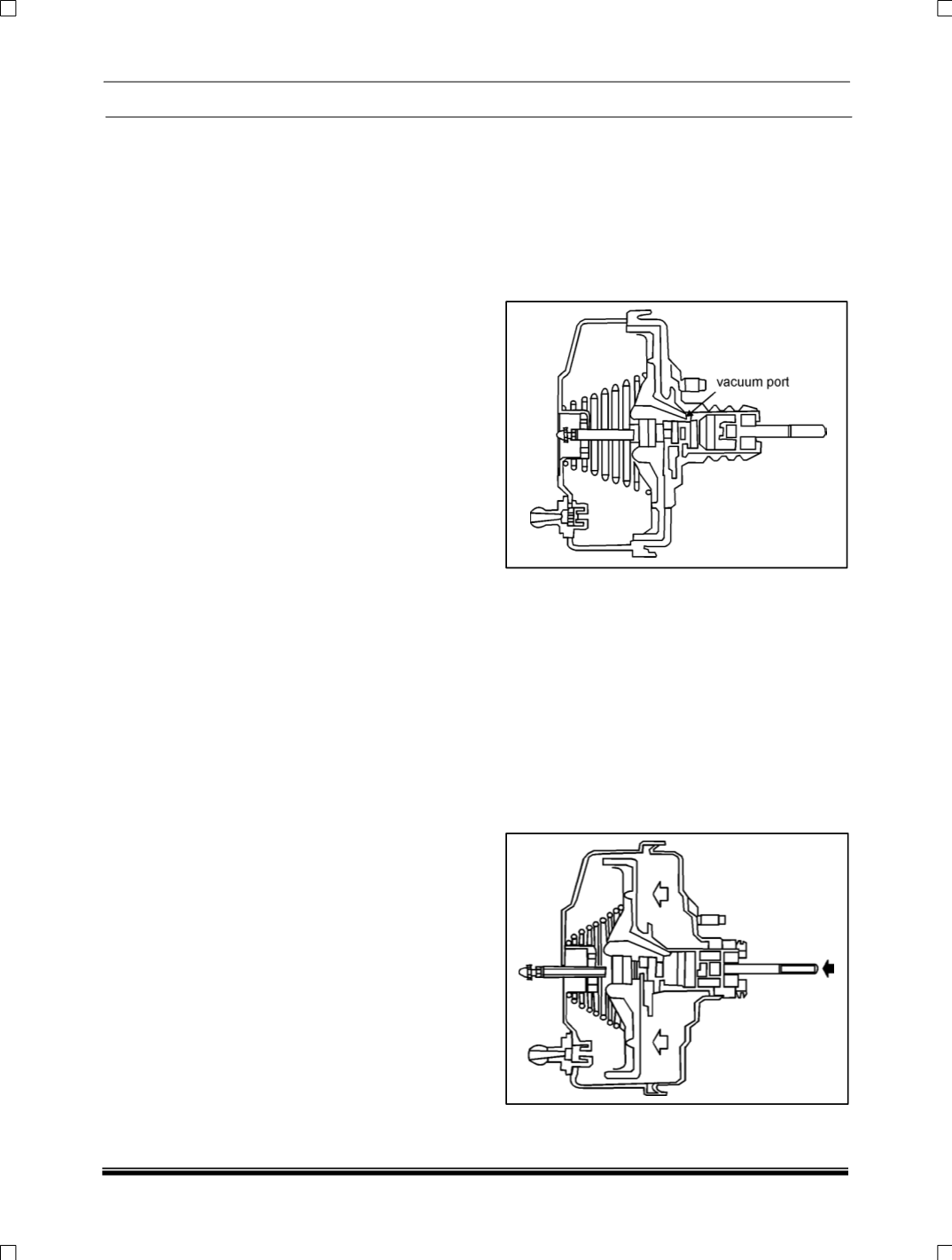

BRAKES
11
6.7 VACUUM BRAKE BOOSTER
General:
TATA BOLT is equipped with a mechanical
vacuum booster to assist driver’s pedal effort.
This is achieved by using vacuum from engine
inlet manifold (for petrol engines) or vacuum
pump (for diesel engines). A diaphragm is
provided between the two shells of the booster,
the difference of pressure on two sides of
diaphragm (one side vacuum and another side
atmospheric
pressure)
gives
mechanical
advantage. This amplifies the driver’s pedal effort
while braking.
The unit is connected to the brake pedal and the
master cylinder. The vacuum booster input push
rod is connected to brake pedal while the output
push rod operates the master cylinder. If failure of
vacuum occurs, the two push rods act as a single
rod and the brakes will work in the conventional
manner, but more pedal effort will be required and
the fatigue of the driver will increase.
NOTE:
The booster assembly and TMC assembly are
coupled with the help of fasteners. The mating
dimensions of booster and TMC are factory
set hence:
1. Do not alter the height of the output rod of
the vacuum booster unit at any stage and
ensure booster output rod is correctly
aligned to the primary piston bore during
assembly of TMC to the booster.
2. Once the booster assembly is removed
from vehicle, at the time of refitting on
vehicle, the gasket at the mounting face of
the booster should be replaced with a new
one.
3. Booster assembly is a non-serviceable unit
and it should never be tampered with.
Working Principle of Vacuum Booster:
1. Brakes OFF
The diaphragm is fully retracted and is held
against the rear shell by the diaphragm return
spring. The in- put rod assembly is also fully
retracted by the brake pedal return spring. With
the input rod in this position, the vacuum port is
open and the vacuum is applied on both the sides
of the diaphragm
2. Brakes Applied
When the brake pedal is depressed, the input rod
assembly moves forward inside the diaphragm
plate until the control valve closes the vacuum
port; at this stage vacuum is still present on both
the sides of the diaphragm. As the input rod
continues to move for- ward, the control plunger
moves away from the control valve, opening the
atmospheric port, which is formed between these
two parts. Air enters the rear shell behind the
diaphragm and the effect of atmospheric pressure
assisted by the valve rod helps in pushing the
diaphragm plate forward and thus the out- put rod
actuates the TMC plunger.










